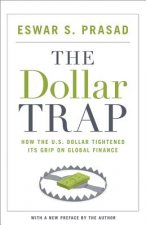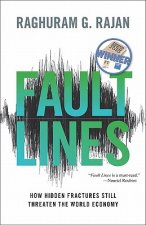
Code: 04530249
Distribution in Japan
by Yoshiro Miwa, Kiyohiko G. Nishimura, J. Mark Ramseyer
Several years have passed since the 'store wars' over barriers to foreign products at Japanese distribution firms. Yet among English-speaking readers, how these firms operate remains a puzzle. In this book, the best Japanese schol ... more
- Language:
 English
English - Binding: Hardback
- Number of pages: 224
Publisher: Oxford University Press, 2002
- More about this

You might also like
-

Chimpanzee Complex Vol.3: Civilisation
12.48 € -17 % -

Management Of Service Businesses In Japan
123.01 € -

European Proto-Industrialization
56.41 € -

Communist Terror in Romania
62.56 € -

Global Beef Trade
164.93 € -17 % -

Industries of Japan
64.57 € -

Der Klosterneuburger Altar
14.60 € -9 %
Give this book as a present today
- Order book and choose Gift Order.
- We will send you book gift voucher at once. You can give it out to anyone.
- Book will be send to donee, nothing more to care about.
More about Distribution in Japan
You get 699 loyalty points
 Book synopsis
Book synopsis
Several years have passed since the 'store wars' over barriers to foreign products at Japanese distribution firms. Yet among English-speaking readers, how these firms operate remains a puzzle. In this book, the best Japanese scholars in their fields attempt to unravel that puzzle. Avoiding culture-based explanations, they employ a systematic and rigorous economic logic--yet, since they also avoid mathematical notation, the argument remains accessible to generalist readers. Collectively, the authors make four basic points: * Within a country, distribution is less similar than it appears. Not only does it vary enormously across industries, but it often varies within a given industry as well. * Across countries, distribution is less diverse than it appears. Although appearances sometimes suggest major cross-national contrasts, on more careful analysis the differences often disappear. * Distribution sometimes depends on the product involved. Because distribution functions as the principal means by which manufacturers acquire information about consumer preferences, the character of distribution can depend crucially both on demand patterns and on manufacturing technology. * In the absence of regulatory intervention, distribution generally will be efficient and non-exclusionary. Regulation usually introduces inefficiency and often creates barriers to entry. Importantly, however, the targets of exclusion will less often involve foreign than domestic competitors. To illustrate these points, the authors draw on both analyses that cross various sectors and analyses that are specific to sectors; they study both regulated and unregulated industries; they describe industries with extensive imports, industries with extensive exports, and industries with neither; they examine the effect of technological change; and they introduce a variety of case studies, from agriculture and automobiles to electrical appliances and apparel.
 Book details
Book details
Book category Books in English Economics, finance, business & management Economics International economics
278.28 €
- Full title: Distribution in Japan
- Author: Yoshiro Miwa, Kiyohiko G. Nishimura, J. Mark Ramseyer
- Language:
 English
English - Binding: Hardback
- Number of pages: 224
- EAN: 9780199248902
- ISBN: 0199248907
- ID: 04530249
- Publisher: Oxford University Press
- Weight: 465 g
- Dimensions: 244 × 164 × 20 mm
- Date of publishing: 10. January 2002
Trending among others
-

New Confessions of an Economic Hit Man
15.20 € -22 % -

Has the West Lost It?
11.07 € -22 % -

The Road to Ruin
16.51 € -22 % -

Merchants of Grain
20.95 € -18 % -

Import/Export Kit For Dummies 3e
19.84 € -35 % -

Treasure Islands
10.67 € -25 % -

Bad Samaritans
12.28 € -28 % -

Is the American Century Over?
10.27 € -28 % -

Natural Capitalism
16.11 € -19 % -

False Dawn
11.27 € -28 % -

Dollar Trap
29.71 € -

International Economics: Theory and Policy, Global Edition
89.86 € -

Principles for Dealing with the Changing World Order
39.18 € -22 % -

SuperHubs
11.27 € -23 % -

Soros on Soros - Staying Ahead of the Curve
33.74 € -28 % -

The Competitive Advantage of Nations
35.86 € -21 % -

China Shakes The World
10.27 € -28 % -

Expert Advisor Programming for Metatrader 4
30.02 € -2 % -

Great Rebalancing
15.41 € -26 % -

International Economics with MyEconLab
66.79 € -

Concise History of International Finance
33.44 € -

Cracking the China Conundrum
50.27 € -

Import/Export: How to Take Your Business Across Borders
28.20 € -28 % -

Splendid Exchange
20.34 € -27 % -

EuroTragedy
42.21 € -7 % -

Handbook of International Trade and Finance
57.02 € -

Forex for Ambitious Beginners
20.54 € -1 % -

Age of Turbulence
18.63 € -22 % -

International Trade
118.28 € -

Managerial Economics in a Global Economy
261.15 € -

Red Flags
26.39 € -4 % -

Fair Trade
10.67 € -25 % -

Fault Lines
13.69 € -27 % -

Transatlantic Defence Procurement
170.27 € -

International Economic Institutions
61.35 € -

Oxford Handbook on The World Trade Organization
67.40 € -

International Trade Finance
73.04 € -12 % -

No Ordinary Disruption
14.60 € -23 % -

Informal Post-Socialist Economy
64.47 € -

Japanese Business Culture and Practices
12.18 € -19 % -

Economics of the European Union
106.69 € -

ReORIENT
33.74 € -16 % -

Doing Business in Europe
73.54 € -10 % -

Almighty Dollar
12.18 € -14 % -

Making Globalization Work
11.27 € -28 % -

Competition Policy
77.07 € -4 % -

Fair Trade For All
25.88 € -

Medieval Trade in the Mediterranean World
46.24 € -

Secrets of Temple
22.06 € -20 %
Collection points Bratislava a 2642 dalších
Copyright ©2008-24 najlacnejsie-knihy.sk All rights reservedPrivacyCookies



 15549 collection points
15549 collection points Delivery 2.99 €
Delivery 2.99 € 02/210 210 99 (8-15.30h)
02/210 210 99 (8-15.30h)